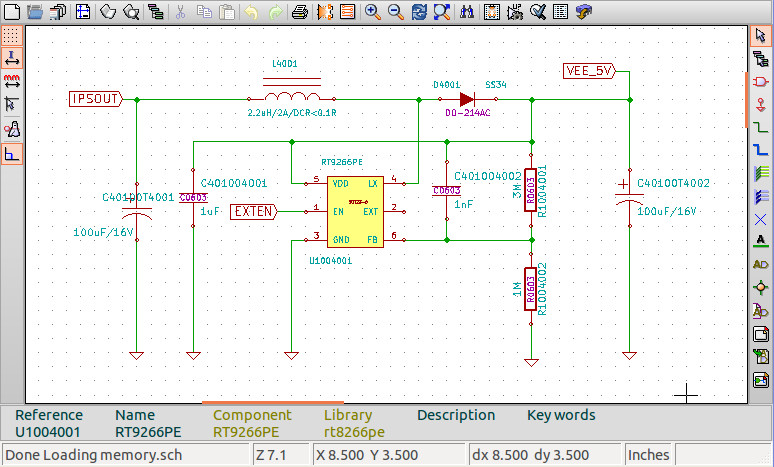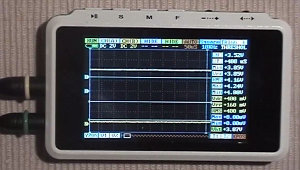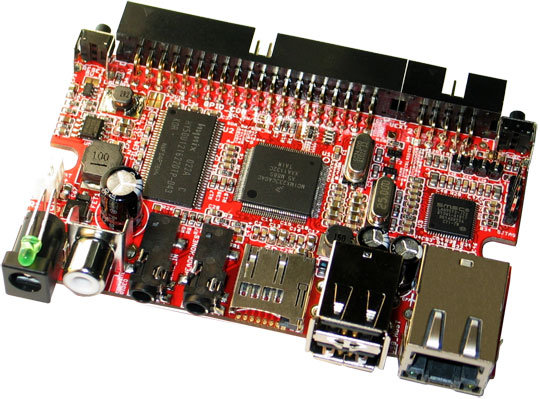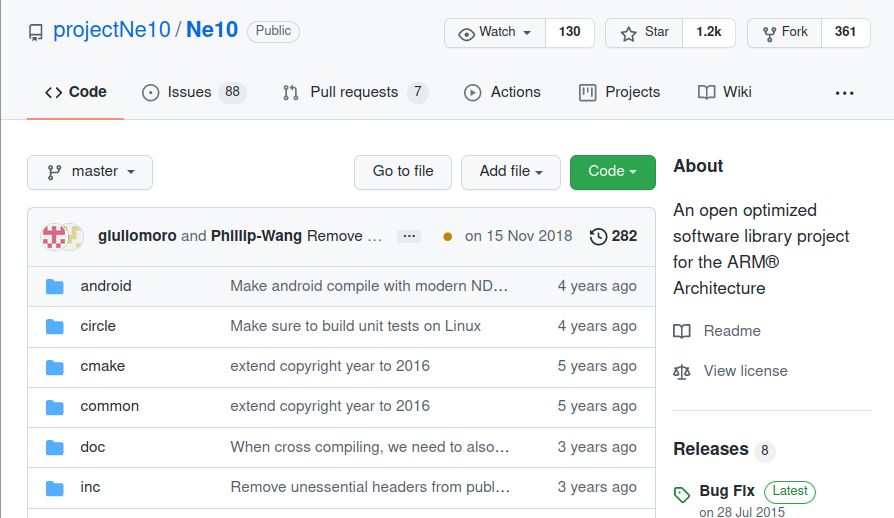Willow Garage announces the formation of the Open Source Robotics Foundation (OSRF), an independent, non-profit organization founded by members of the global robotics community whose goal is to support the development, distribution, and adoption of open source software for use in robotics research, education, and product development. The OSRF Board of Directors is composed of the following members: Wolfram Burgard. Dr. Burgard, a professor at the University of Freiburg, heading the Laboratory for Autonomous Intelligent Systems. His major research interests lie in mobile robotics, state estimation and control, as well as artificial intelligence. Ryan Gariepy, co-founder and CTO of Clearpath Robotics. Clearpath Robotics is a company specializing in the design and manufacture of unmanned vehicle solutions for industrial R&D. Brian Gerkey, Director of Open Source Development at Willow Garage who has worked on the open source Robot Operating System (ROS) since 2008. Dr. Gerkey will be CEO of the OSRF. Helen […]
Open Source Mali 200/400 Drivers (LIMA) Demo on Android Tablet
Luc Verhaegen, the lead developer of LIMA open source project, provided an update at LinuxTag 2012 last week-end. This open-source MALI GPU driver isn’t ready for consumers yet, but the LIMA team has made some progress and showcased an OpenGL ES demos running on a Chinese tablet running Android. Luc said the tablet used for the demo is the same hardware as the Spark KDE/Vivaldi tablet, so the video demo below must be running on an AMLogic 8726-M processor with a Mali 400 GPU. The drivers already (partially) work on both Mali-200 and Mali-400 GPUs. The fragment shader instructions set is fully known and they have disassembler and assembler fully implement, but they still need to work on the compiler. The vertex shader instruction set is 80% known, they have a simple shader disassembler and are working on the assembler. You can also watch the 40 minute presentation at LinuxTag […]
Schematics Capture and PCB Layout in Linux with Kicad
Most schematics capture and PCB layout software run on Windows and are closed source. But if your favorite OS is Linux, there are a few open source software including Kicad and gEDA. There is also Cadsoft Eagle which can be installed in Linux with a free license for hobbyists and educational purposes, but is not open source. Today, I’ll focus on Kicad. I don’t really capture schematics, let alone layout PCBs, but I sometimes need to use this type of software to locate pins/components on the schematics and PCB and check some parts of the schematics that can affect software. So I will mainly give an overview of Kicad and write my experience trying to import another project (Beagleboard XM) to Kicad. If you want to learn how to get started with your own project with Kicad, you might want to have a look at Teho Labs Kicad Tutorial. In […]
199 USD Seeed Studio DSO Quad Open Source Oscilloscope
The DSO (Digital Storage Oscilloscope) Quad is a pocket size 4 channel digital oscilloscope for common electronic engineering tasks based on STM32F103VCT6 ARM cortex M3 MCU with a 3″ display. It can provide 72MS/s sampling rate with integrated FPGA and high speed ADC and an internal 2MB USB disk can be used to store waveform captures, user applications and to upgrade firmware. SeeedStudio DSO Quad is not exactly a new product (June 2011), but I was not aware of this type of low cost oscilloscopes until I come across a review today. Here are the key features of this tiny oscilloscope: Pocket size and light weight Two 72MS/s analog channels, plus two digital channels Signal Generator Auto Measurement Various Triggering Option Easy waveform storage Firmware upgrade User applications Open source and technical specifications: 2x Analog channel: [CH A] [CH B] 2x Digital channel : [CH C] [CH D] Vertical […]
Yocto Project Release 1.2 Announced
The Yocto Project Release 1.2 has just been announced. This release codenamed “Denzil” and based on Poky 7.0 is the third release of the project. The project was announced in October 2010 to provide developers with greater consistency in the software and tools they’re using across multiple architectures for embedded Linux development. Yocto Project 1.2 Features: HOB redesigned with new user interface and work flow. HOB is a GUI based tool for users to customize and build an embedded Linux image in a more intuitive and easier way. Build appliance, which is a set of changes and enhancements to enable users to build a virtual machine image running Linux built with the Yocto Project. Within the Linux running on the virtual machine, users can customize and build their own customized embedded Linux images. Error message handling improvement, making error message more efficient, useful and accurate to users. New kernel update […]
30 Euros Olimex iMX233-OLinuXino Linux Development Board
Olimex announced the first 10 prototypes of OLinuXino development board. Started in March of this year, OLinuXino is a development board based on Freescale i.MX233 aiming to provide a low cost (30 Euros) open source hardware and software single board computer to run Linux. Here are the specifications of OLinuXino single board computer: Freescale iMX233 454Mhz ARM9 processor 64MB of RAM Linux bootable image from SD-CARD TV-Video Output USB host for Keyboard, camera, WiFi, etc interfacing UEXT connector and GPIO connectors with the same style as DuinoMite so that developers can add external modules supporting Zigbee, Bluetooth, RFID readers, relays, switches, sensors, etc… The company also plans to provide 2 plug-in modules for this board: iMX-LCD – a 4.3″ TFT 24 bit color LCD with touchscreen (EUR 30) MX-HUB – A board adding 2 USB hosts and Ethernet (EUR 15) [Update: The company will actually make 2 versions of this […]
ARM Releases Ne10: An Open Source Library with NEON Optimized Functions
The Advanced SIMD extension (aka NEON or “MPE” Media Processing Engine) is a combined 64- and 128-bit single instruction multiple data (SIMD) instruction set that provides standardized acceleration for media and signal processing applications for ARM Cortex-A (ARMv7) processors and the goal of these instructions is similar to MMX, SSE, and 3DNow! extensions for x86 processors. Starting early 2011, ARM has been working internally on a project codenamed Snappy to develop common functions accelerated by NEON. They have now released the first version of Snappy, now called the Ne10 library, which is available on GitHub at https://github.com/projectNe10/Ne10 . The code has been developed in C and Assembler and tested on Ubuntu on ARM (Linaro). A Makefile is also included to build it for Android (AOSP). The current functions include vector and matrix operations accelerated by NEON instructions. Since the library is open source, ARM hopes developers will make use of the Ne10 […]
The Power of SPDX (Software Package Data Exchange) – ELC 2012
Mark Gisi, Sr. Manager of Intellectual Property at Wind River , discusses SPDX (Software Package Data Exchange) at Embedded Linux Conference 2012. Abstract: Sharing Critical Licensing Information within a Linux Device Supply Chain Embedded Linux device runtimes are derived from 100s of open source packages. A common misunderstanding is that just one or two licenses govern a given open source package, when in fact; often a dozen or more apply. Therefore a device runtime could be under 100s of unique licenses. Determining which licenses are relevant is challenging. SPDX, the Linux Foundation’s license exchange format, provides an effective mechanism for recording and sharing licensing information within a device vendor supply chain. We present an overview of SPDX along with a detailed source code example on how to create and extract relevant licensing information. The target audience includes developers, engineering managers, release operation engineers and license compliance professionals. They will learn […]







